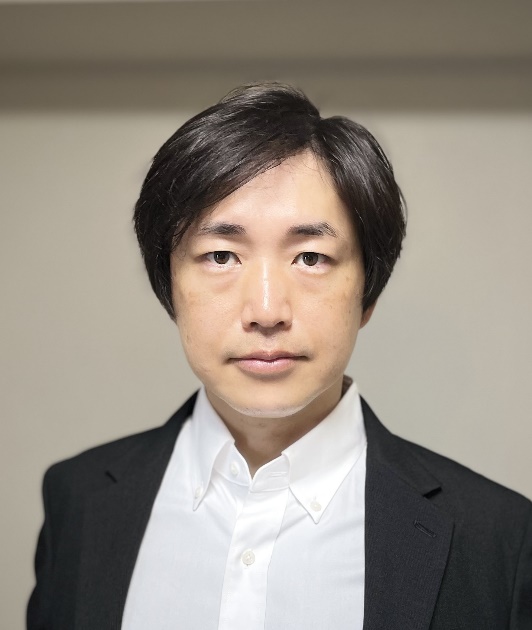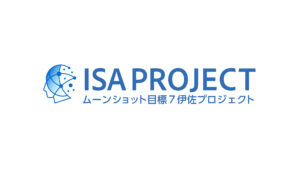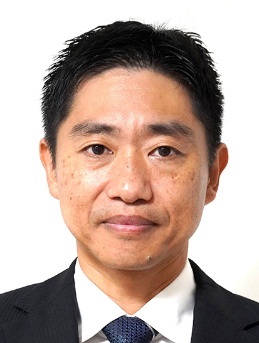Gen Ohtsuki

氏名Name
Gen Ohtsuki
所属・職名Affiliation, Title, etc.
Department of Neuroscience, Graduate School of Medicine in Kyoto University, Project-specific Professor
研究室HPWebsite
一言メッセージShort Message
本プロジェクトでの研究概要Outline of the research in this project
We aims to use AI-based quantification to analyze microglia and neuronal cell death across the entire brain in both male and female dementia model mice. We will identify the locations, timing, and characteristics of disease-associated glial cells in each model and investigate their correlation with behavioral abnormalities. We will perform spatial omics and functional analysis of microglia and macrophages in both dementia mice and human patient brains, distinguishing their origins, and elucidate the distribution of RNA and protein markers, as well as cell classification and transitions. The goal is to restore the neurodegenerative disease state by selectively inhibiting the function of cytotoxic glial cells and suppressing chronic inflammation. This will be accomplished by specific microglia inhibition, genetic manipulation, and suppression of epigenetic factors in model mice, followed by investigation through neurophysiology, behavioral science, brain function, anatomy, and multi-omics, aiming for prevention and recovery.
First, (1) we will develop an efficient method to quantitatively analyze the distribution and morphology of microglia in various brain regions of dementia model mice, assessing gender differences and variations from early to late life. Next, (2) we will conduct a comprehensive spatial analysis of the brains of human dementia patients and model mice, validating the expression of disease-related molecular groups. Finally, (3) we will use cell-type-specific genetic manipulation techniques to introduce immune cell-specific genes into dementia models, aiming to suppress and recover disease states.
これまで主な研究内容Outline of main research so far
We have conducted research in the field of neuroscience and neurophysiology, focusing on the interactions between neurons and microglia, as well as their plasticity. Specifically, we have concentrated on understanding the impact of inflammatory stress on neural cells in the brain and elucidating the role of the immune system in psychiatric disorders.
Previously, we have analyzed the role of immune cells in inducing neuroplasticity and their effects on brain activity and disease-like behaviors in an acute inflammation model using rodents (Yamamoto et al., 2019; Yamawaki et al., 2022; Ohtsuki et al., 2022). We also investigated the impact of chronic neuroinflammation on mental disorders such as autism, schizophrenia, and depression, and found that the activation of cerebellar microglia cells plays a critical role in the progression of these diseases in developmental disorder models (Hikosaka et al., 2023; Kawatake-Kuno et al., 2024; Hikosaka et al., 2025). These findings are expected to contribute to the development of new therapeutic approaches targeting microglia in neurodegenerative diseases. Furthermore, by studying the impact of immune cells on cognitive decline, we aim to gain new insights into neuroimmunology. We also plan to deepen our research in this field by conducting energy metabolism analysis and biomarker exploration in neurodegenerative diseases such as dementia and amyotrophic lateral sclerosis.

主な経歴・受賞歴等Career, Awards, etc.
- 2002:
- Graduated from the Faculty of Science, Kyoto University
- 2004:
- Completed the Master's Program in Biological Sciences, Graduate School of Science, Kyoto University
- 2007:
- Completed the Doctoral Program in Biological Sciences, Graduate School of Science, Kyoto University
Doctoral Degree (Institution: Graduate School of Science, Kyoto University, Ph.D. in Science) - 2006-2007:
- JSPS DC2 Research Fellow
- 2007-2008:
- JSPS PD Research Fellow, Erasmus University Medical Center (Netherlands)
- 2008-2011:
- Postdoctoral Scholar, Department of Neurobiology, University of Chicago (USA)
- 2011-2015:
- Assistant Professor, Department of Molecular Physiology, Graduate School of Medical Sciences, Kyushu University
- 2015-2020:
- Program-specific Associate Professor, Hakubi Project, Hakubi Center, Kyoto University
- 2020-Present:
- Program-specific Professor, Department of Drug Discovery Medicine, Graduate School of Medicine, Kyoto University
主要業績Major Publications
Hikosaka M, Parvez MSA, Yamawaki Y, Oe S, Liang Y, Wada Y, Hirahara Y, Koike T, Imai H, Oishi N, Schalbetter SM, Kumagai A, Yoshida M, Sakurai T, Kitada M, Meyer U, Narumiya S, & *Ohtsuki G. (2025). Maternal immune activation followed by peripubertal stress combinedly produce reactive microglia and confine cerebellar cognition. Commun Biol, 8(1):296.
https://doi.org/10.1038/s42003-025-07566-2.
Kawatake-Kuno A, Li H, Inaba H, Hikosaka M, Ishimori E, Ueki T, Garkun Y, Morishita H, Narumiya S, Oishi N, *Ohtsuki G, Murai T, & Uchida S. (2024). Sustained antidepressant effects of ketamine metabolite involve GABAergic inhibition-mediated molecular dynamics in aPVT glutamatergic neurons. Neuron, 112(8), 1265-1285.e10.
https://doi.org/10.1016/j.neuron.2024.01.023.
*Ohtsuki G, Kim T, Sun P, Chen Y, & Ugo D'Angelo E. (2023). Editorial: Cerebellum-related learning and psychiatric diseases. Front Cell Neurosci, 17:1132286.
https://doi.org/10.3389/fncel.2023.1132286.
Hikosaka M, Kawano T, Wada Y, Maeda T, Sakurai T, *Ohtsuki G. (2022). Immune-Triggered Forms of Plasticity Across Brain Regions. Front Cell Neurosci, 16:925493.
https://doi.org/10.3389/fncel.2022.925493.
Yamawaki Y, Wada Y, Matsui S, & *Ohtsuki G. (2022). Microglia-triggered hypoexcitability plasticity of pyramidal neurons in the rat medial prefrontal cortex. Curr Res Neurobiol, 3:100028.
https://doi.org/10.1016/j.crneur.2022.100028.
*Ohtsuki G. (2020). Modification of Synaptic-Input Clustering by Intrinsic Excitability Plasticity on Cerebellar Purkinje Cell Dendrites. J Neurosci, 40(2), 267-282.
https://doi.org/10.1523/JNEUROSCI.3211-18.2019.
Yamamoto M, Kim M, Imai H, Itakura Y, & *Ohtsuki G. (2019). Microglia-Triggered Plasticity of Intrinsic Excitability Modulates Psychomotor Behaviors in Acute Cerebellar Inflammation. Cell Rep, 28, 2923-2938.e8.
https://doi.org/10.1016/j.celrep.2019.07.078.
Ohtsuki G, & Hansel C. (2018). Synaptic Potential and Plasticity of an SK2 Channel Gate Regulate Spike Burst Activity in Cerebellar Purkinje Cells. iScience, 1, 49-54.
https://doi.org/10.1016/j.isci.2018.02.001.
Ohtsuki G, Piochon C, Adelman JP, & Hansel C. (2012). SK2 channel modulation contributes to compartment-specific dendritic plasticity in cerebellar Purkinje cells. Neuron, 75(1), 108-120.
https://doi.org/10.1016/j.neuron.2012.05.025.
Ohtsuki G, Nishiyama M, Yoshida T, Murakami T, Histed M, Lois C, & Ohki K. (2012). Similarity of visual selectivity among clonally related neurons in visual cortex. Neuron, 75(1), 65-72.
https://doi.org/10.1016/j.neuron.2012.05.023.



